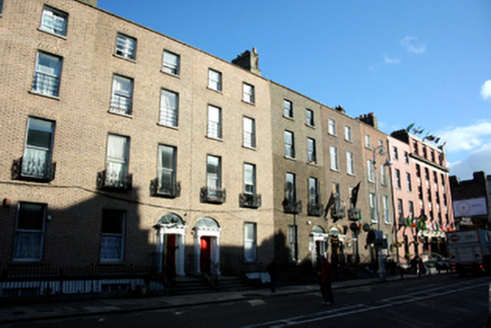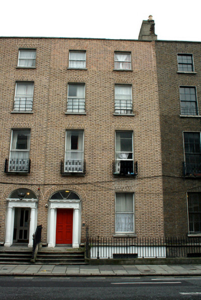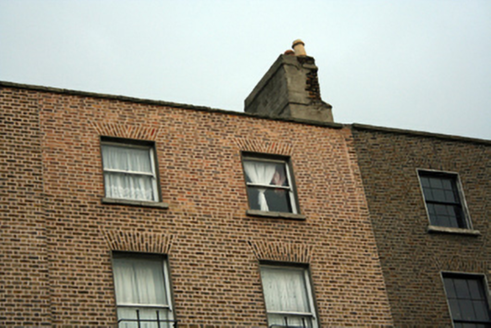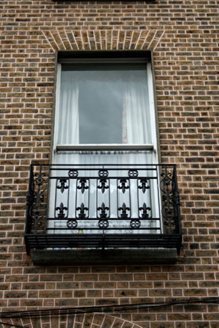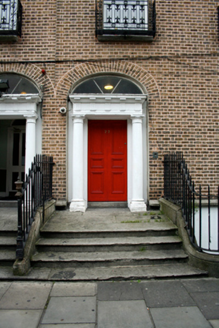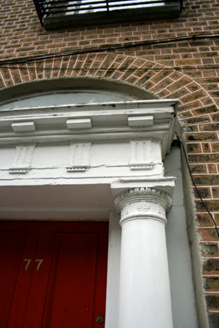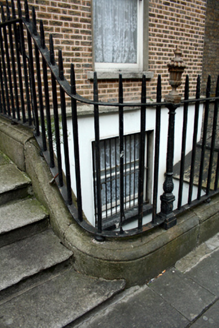Survey Data
Reg No
50010172
Rating
Regional
Categories of Special Interest
Architectural, Artistic
Original Use
House
In Use As
Hostel
Date
1810 - 1830
Coordinates
316282, 234842
Date Recorded
21/10/2011
Date Updated
--/--/--
Description
Terraced two-bay four-storey house over raised basement, built c.1820, currently in use as guest house. M-profile pitched slate roof having parapet with squared granite coping and stepped rendered brick chimneystacks to boundary with No. 76. Flemish bond yellow brick walls having moulded granite plinth over rendered walls with basal plinth to basement. Third floor rebuilt (variation in brick colour and window head detail). Diminishing square-headed window openings having gauged brick voussoirs, patent rendered reveals, granite sills and replacement single-pane timber sliding sash windows throughout. Iron grille to basement opening. Recent decorative metal balconettes to first floor windows and recent steel window guards to second floor windows. Three-centred-arch door opening with gauged brick voussoirs housing stone doorcase comprising Roman Doric columns, with floral and egg and dart capital detail, on stone bases surmounted by Doric frieze displaying alternating triglyphs and metopes, and projecting masonry cornice, with replacement spoked fanlight. Timber panelled door with six raised-and-fielded panels opening onto granite flagged platform bridging basement area, having stepped granite approach. Approach flanked by spearheaded wrought-iron railings on moulded granite plinths returning to enclose basement area, with decorative posts displaying urn finials. Square-headed door opening to basement with replacement timber door at basement level. No access to concreted basement area from street. Limited access to rear of building. Recent five-storey building to Mabbot Lane occupies significant depth of plot and spans triple plot width across Nos. 77-79. Building façades are expressed individually on Mabbott Lane but share singular roof.
Appraisal
Dating from the early nineteenth century, this house forms an integral component of Lower Gardiner Street, a significant streetscape in the north Georgian city. Despite some recent alterations, the building's historic form and character has survived largely intact with the survival of various original features including a pleasant doorcase, approach and enclosing railings. Gardiner Street Lower was developed by Gardiner in the late eighteenth century, with leases dating from the 1790s. The street formed part of Gardiner's route from Beresford Place to Mountjoy Square, and No.77 forms part of a surviving terrace along this route.
